#Automobile Industry Analysis
Text
Automobile Market Size, Share, Growth Forecast
The Automobile Industry:
A Driving Force in Economic Evolution
The automobile industry is a dynamic and ever-evolving sector that plays a pivotal role in shaping the global economy. From technological advancements to market trends and competitive landscapes, the automobile market is a multifaceted arena that demands close attention and analysis. In this blog, we delve into the intricacies of the automobile industry, exploring its size, trends, market share, and future forecasts.
Automobile Market Size and Market Share:
Quantifying Success
Quantifying the size and market share of the automobile industry requires a comprehensive examination of global and regional trends. The global automobile market size was worth around USD 2810.63 billion in 2022 and is predicted to grow to around USD 3969.84 billion by 2030 with a compound annual growth rate (CAGR) of roughly 4.42% between 2023 and 2030. As of the latest data, the industry boasts a colossal market size, fueled by the increasing demand for vehicles across diverse segments. From passenger cars to commercial vehicles and electric automobiles, the market is witnessing a paradigm shift, with emerging markets contributing significantly to its growth.

Automobile Industry Analysis:
Unveiling the Engine of Progress
The automobile industry, often referred to as the heartbeat of modern economies, encompasses a wide range of activities, including manufacturing, marketing, sales, and aftermarket services. The sector is characterized by constant innovation, with players vying to stay ahead in the race for technological supremacy. As we analyze the global scenario, it becomes evident that the industry is in the midst of a profound transformation, driven by factors such as electric vehicles, autonomous driving, and sustainability initiatives.
Automobile Sector:
A Comprehensive Look the Roadmap to Success
The automobile sector comprises various components, from manufacturers and suppliers to dealerships and service providers. Understanding the sector's dynamics involves dissecting the supply chain, regulatory frameworks, and consumer preferences. Moreover, the sector is witnessing a surge in collaborative efforts between traditional automakers and tech companies, ushering in an era of unprecedented partnerships that redefine the industry's landscape.
Automobile Market Forecast:
Navigating Future Horizons
Forecasting the future of the automobile market is akin to predicting the trajectory of a speeding car – challenging but essential. The integration of artificial intelligence, connectivity, and sustainability measures is poised to redefine the industry. As we peer into the crystal ball, electric vehicles are expected to play a pivotal role, with governments worldwide incentivizing their adoption and driving a surge in market demand.
Automobile Market Trends:
Riding the Waves of Change
Trends in the automobile market are as dynamic as the vehicles themselves. From the rise of electric and hybrid technologies to the growing popularity of shared mobility solutions, industry trends shape the decisions of both manufacturers and consumers. The ongoing emphasis on sustainability, safety features, and connected car technologies further underscores the ever-evolving nature of the industry.
Automobile Market in India:
A Kaleidoscope of Opportunities
India, one of the world's largest and fastest-growing economies, occupies a prominent place in the global automobile market. As we explore the automobile market share in India, we unravel the success stories of the largest automobile companies in the country. The growth of the automobile industry in India is not only a testament to the nation's economic prowess but also a reflection of the changing aspirations of its burgeoning middle class.
Conclusion:
Driving into the Future
In conclusion, the automobile market is a vast and dynamic ecosystem that continues to redefine itself with each passing day. From market size and trends to forecasts and regional analyses, understanding the intricacies of the industry is crucial for stakeholders aiming to navigate the fast lane of economic evolution. As technology continues to push the boundaries of what is possible, the automobile market stands at the crossroads of innovation, sustainability, and unparalleled growth. Buckle up as we embark on a journey into the future of mobility.
0 notes
Text
Driving into the Future: Navigating Trends and Forecasts in the Automobile Market
Introduction:
The Automobile Market, a thriving hub of innovation and transformation, is steering towards a future defined by trends, forecasts, and dynamic shifts. Let's buckle up and explore the landscape where the Automobile Industry, Automobile Sector, and competitive forces converge.
Unveiling the Automobile Market:
The term "Automobile Market" encompasses a spectrum of vehicles, from traditional internal combustion engines to the cutting-edge Electric Vehicles. As we dive into this market, we witness the synergy of technology, consumer demands, and environmental considerations shaping the future of mobility.

Driving Forces: Automobile Industry Analysis:
A comprehensive Automobile Industry Analysis unveils the intricate workings beneath the hood. Beyond the assembly lines, it's a realm where technological breakthroughs, sustainability goals, and consumer preferences merge. The industry analysis is the roadmap, decoding the past and predicting the future.
Trends That Shift Gears: Automobile Market Trends:
The Automobile Market is in a perpetual state of flux, with trends dictating the course. The surge in Electric Vehicles, advancements in autonomous driving, and the integration of digitalization mark the current trajectory. Stay tuned to the trends; they're the signposts to what's next in automotive innovation.
Navigating the Landscape: Automobile Market Segmentation:
The diversity within the Automobile Market is staggering, with segmentation playing a crucial role. From passenger vehicles to commercial giants and the rising prominence of Electric Vehicles, understanding the segments is key to deciphering the pulse of the market.
Race to the Top: Competitive Analysis in the Automobile Market:
In this high-stakes race, competitive forces shape the industry's destiny. Established giants like Toyota and emerging disruptors like Tesla engage in a constant battle for market share, technological supremacy, and consumer loyalty. The Competitive Analysis is the rear-view mirror reflecting the industry's maneuvers.
Sizing Up Success: Automobile Market Size and Forecast:
Numbers speak volumes, especially in the dynamic Automobile Market. Understanding the market size and forecasting its trajectory provide crucial insights for stakeholders. As the market evolves, keeping a finger on its pulse ensures strategic decisions are aligned with future trends.
Peering into the Crystal Ball: Automobile Market Forecast:
What does the future hold for the Automobile Market? The forecast is the crystal ball, predicting the impacts of technological advancements, regulatory shifts, and consumer behaviors. A well-informed forecast is the compass guiding businesses through the twists and turns of the evolving market.
Conclusion: Steering Towards Tomorrow:
As we navigate the ever-changing contours of the Automobile Market, it's evident that adaptability and foresight are the keys to success. The synergy of the Automobile Industry, Automobile Sector, and competitive forces paints a picture of a future where innovation reigns supreme. Buckle up, stay informed, and get ready to drive into the future of the Automobile Market
#Automobile Market#Automobile Industry#automobile sector#Automobile Industry Analysis#Auto Components Industry Analysis
0 notes
Text
#Global Automobile Shock Absorber Market Size#Share#Trends#Growth#Industry Analysis#Key Players#Revenue#Future Development & Forecast
0 notes
Text
A compelling blog exploring the increasing adoption of electric vehicles within the automotive sector.

0 notes
Text
The Growing Prominence of the Carbon Black Market fueled by Rising Automotive Industry
Buy Now
What is the Size of US Carbon Black Industry?
US Carbon Black Market is expected to grow at a CAGR of ~ % between 2017-2022 and is expected to reach ~USD Mn by 2028. The Carbon Black Market is majorly driven by increasing automotive industry, tire replacement demand, urbanization and renewable energy needs, fueled by rising middle-class populations and technological advancements.
The automotive industry is a major consumer of carbon black, using it in tire manufacturing to improve tire strength, durability, and overall performance. As the global demand for vehicles increases, particularly in emerging economies, the demand for carbon black in tire production grows as well.
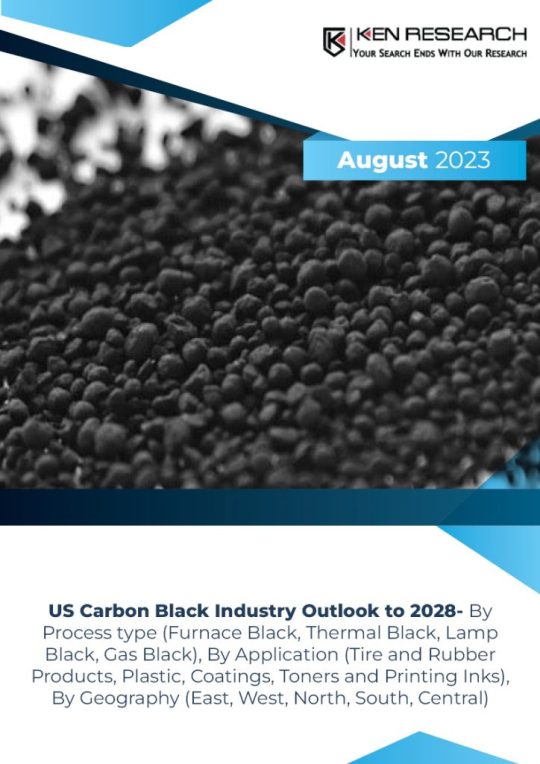
Click here to Download a Sample Report
n mature markets, there is a continuous demand for tire replacements due to wear and tear. This consistent need for replacement tires drives demand for carbon black to be used in new tire production.
Carbon black is used as a pigment and colorant in various products like inks, paints, and coatings. The growing use of these products in diverse industries such as construction, packaging, and consumer goods drives demand for carbon black.
Ongoing research and development in carbon black production techniques can lead to improvements in quality, efficiency, and cost-effectiveness. These advancements stimulate the market growth by making carbon black more accessible to various industries.
US Carbon Black Market by loan Process
In terms of loan type, the market is segmented into Furnace Black and Gas Black. Furnace Black is seen dominant in the US Carbon Black market in 2022. Furnace Black is a type of Carbon Black produced through the incomplete combustion of hydrocarbons. It finds extensive applications in the production of rubber, tires, plastics, inks, coatings, and other industrial products due to its reinforcing and coloring properties. This ubiquity across multiple sectors positions Furnace Black as a central component in various manufacturing supply chains.
Moreover, the versatility of Furnace Black has allowed industries to find innovative applications beyond traditional uses, such as in renewable energy technologies, specialty materials, and advanced composites. This adaptability has expanded its market reach and influence.
US Carbon Black Market by end Application
The market is segmented by Tires and Rubber products, Plastic, Toners and Printing inks, Coatings and Others. Among these, Tires and Rubber products is majorly the dominant end users in the US Carbon Black market as noted in 2022. As vehicles move, friction between tires and roads generates Carbon Black particles that contribute to air pollution and pose health and environmental risks.
Amid growing concerns about air quality and environmental impact, the Tires and Rubber products sector has faced increased pressure to mitigate its emissions. Regulatory agencies and consumer demand for eco-friendly products have prompted manufacturers to adopt strategies that reduce Carbon Black emissions.
Visit this link to Download a Custom Report
US Carbon Black market by Region
The US Carbon Black market is segmented by Region into North, South, East, West and central. In 2022, South region is more dominate in US Carbon Black Market. The South region has witnessed a growing emphasis on environmental sustainability and air quality improvement. Cities within this region, such as Houston and Atlanta, have grappled with significant air pollution challenges, spurring local governments and industries to address Carbon Black emissions more aggressively.
Competition Scenario in US Carbon Black Market
The competition scenario in the US Carbon Black market was characterized by a mix of companies and organizations focused on reducing Carbon Black emissions and promoting cleaner technologies.
Prominent players in this market included environmental consulting firms such as Aether, Abt Associates, and ICF International. These companies provided expertise in air quality monitoring, emission inventories, and policy analysis, assisting industries and governments in devising strategies to mitigate Carbon Black emissions.
In addition to consulting firms, technology providers played a crucial role. Companies like Cleaire Advanced Emission Controls and Johnson Matthey offered emission control solutions, including diesel particulate filters and catalytic converters, designed to reduce Carbon Black emissions from vehicles and industrial sources.
What is the Expected Future Outlook for the Overall US Carbon Black Market?
The US Carbon Black market was valued at USD ~Million in 2022 and is anticipated to reach USD ~ Million by the end of 2022, witnessing a CAGR of ~% during the forecast period 2022- 2028. The US Carbon black market is driven by increasing urbanization, rising automotive industry and rising demand for consumer goods. Carbon black is integral to tire production, enhancing tire strength and performance. As vehicle demand increases, particularly in electric and autonomous segments, the need for quality tires will drive carbon black demand.
The shift toward sustainability will influence the market. Manufacturers seeking eco-friendly alternatives will drive demand for sustainable carbon black, derived from sources like pyrolysis of waste tires. This aligns with green initiatives and offers growth potential. Increasing number of applications, the market's expansion will be fueled by innovative applications beyond tires. Carbon black finds use in conductive plastics, battery components, and aerospace materials, benefiting from technology-driven trends in electronics, energy storage, and aviation.
The growing renewable energy sector presents opportunities. Carbon black enhances wind turbine blade strength, crucial for wind energy expansion. As the US emphasizes clean energy, carbon black's contributions to wind power will drive its demand. Urban development will also fuel the demand for carbon black in construction materials, coatings, and sealants. As US cities evolve, the construction industry's steady growth will sustain the market's need for these applications.
Furthermore, Carbon black's role in plastics, packaging, and consumer goods will experience growth as US consumer preferences evolve. The trend toward durable, UV-resistant products will drive manufacturers to incorporate carbon black for enhanced performance. Carbon black's diverse applications contribute to its resilience during economic fluctuations. Industries ranging from automotive to construction rely on its properties, ensuring a steady demand even amidst changing economic conditions, securing future market growth.
#US Carbon Black market#US Carbon Black market forecast#US Carbon Black market share#US Carbon Black market size#US Carbon Black market growth#US Carbon Black market analysis#US Carbon Black Industry#United States Carbon Black market#US Carbon Black market trends#US Carbon Black industry challenges#Leading Service providers US Carbon Black Market#Leading players in US furnace black market#Competitors in US thermal black market#Emerging players US Carbon Black industry#Major players in US Carbon black sector#Top 5 Carbon black manufacturers US#Automobile companies in Carbon Black market US#Top players US lamp black market#Investment US Carbon Black Market#Funds raised startups furnace black market#Thermal Black in US Carbon Black market#Furnace Black in US Carbon Black market#Tires and Rubber products in Carbon Black market US
0 notes
Text

Accelerating Progress: AI Powers a $127 Billion Autonomous Vehicle Market”
In today’s rapidly evolving technological landscape, artificial intelligence (AI) stands at the forefront of innovation, steering the transformation of the automotive industry. With a staggering market value projected to reach approximately $127 billion, the autonomous vehicle market is no longer a vision of the future — it’s a tangible reality driven by the power of AI.
AI: The Driving Force Behind Autonomy
Artificial intelligence has emerged as a game-changer in the automotive sector, propelling the advancement of autonomous vehicles. Machine learning algorithms, predictive analytics, and deep learning capabilities have empowered these vehicles to perceive their surroundings, make split-second decisions, and navigate seamlessly — all crucial elements in achieving true autonomy.
Solving the Mobility Conundrum
The integration of AI in autonomous vehicles addresses some of the most pressing challenges in modern transportation. Traffic congestion, accidents caused by human error, and environmental concerns are being mitigated as AI optimizes traffic flow, enhances safety, and reduces the ecological footprint. Autonomous vehicles promise a future where mobility is not just convenient but also sustainable.
Market Dynamics: An Economic Powerhouse
The $127 billion estimated value of the autonomous vehicle market is a testament to the immense potential and economic impact AI-driven autonomous vehicles hold. From established automotive giants to tech startups, the market has attracted diverse players eager to carve their niche and drive the industry’s evolution.
AI-Enabled Features in Autonomous Vehicles
AI’s role in the autonomous vehicle market is diverse and expansive. Adaptive cruise control, lane-keeping assistance, automatic emergency braking, and self-parking capabilities are just a few examples of AI-driven features that enhance the overall driving experience and safety. These advancements are a peek into the boundless possibilities AI can unlock within the automotive realm.
Challenges and Future Outlook
While the growth of the autonomous vehicle market is promising, challenges such as regulatory hurdles, public acceptance, and the need for robust infrastructure must be addressed. However, with ongoing research, development, and collaborative efforts between industry stakeholders and policymakers, the future of autonomous vehicles driven by AI looks exceedingly bright.
In conclusion, the autonomous vehicle market, fueled by artificial intelligence, represents a significant paradigm shift in the automotive industry. As the market continues to expand and mature, the integration of AI will play a pivotal role in shaping a safer, more efficient, and sustainable future of mobility. With each milestone achieved, we inch closer to a world where autonomous vehicles become an integral part of our everyday lives, driven by the transformative force of AI.
#automobile#artificial intelligence#industry data#data analysis#datascience#crm software#software development#inteligência artificial#webdevelopment#advertising#architecture#black and white#art#artists on tumblr#nail art#it services#n#c#aesthetic#digital art
0 notes
Text
Typical case analysis of digital industry, real materials of die-casting!
Die casting, also known as high pressure casting, is a near net shape technology that has been widely used in automotive, aerospace, and electronics industries in recent years. In die-casting process, molten metal (usually light alloy) fills cavity at high pressure and high speed under action of punch, and cools quickly to form final casting.Die-casting is generally divided into cold-chamber…

View On WordPress
#CAE analysis#cold-chamber die-casting#die casting technology#die-cast automobile structural parts#die-casting#die-casting company#die-casting enterprises#die-casting industry#die-casting machines#Die-casting mold#die-casting process#die-casting technology#high pressure casting#hot-chamber die-casting#Mold temperature
0 notes
Text
#automotive industry report resellers#reports for transport industry#research reports for automobile#industry analysis for market research
0 notes
Text
Automobile Electronics Market Growth, Overview with Detailed Analysis 2022-2028
Automobile Electronics Market Growth, Overview with Detailed Analysis 2022-2028
This report studies the Automobile Electronics Market with many aspects of the industry like the market size, market status, market trends and forecast, the report also provides brief information of the competitors and the specific growth opportunities with key market drivers. Find the complete Automobile Electronics Market analysis segmented by companies, region, type and applications in the…
View On WordPress
#Automobile Electronics#Automobile Electronics forecast#Automobile Electronics Industry#Automobile Electronics Market#Automobile Electronics price#Automobile Electronics report#Automobile Electronics research#Automobile Electronics share#Automobile Electronics trends#Covid-19 Impact Analysis
0 notes
Text
Alissa Quart's 'Bootstrapped: Liberating Ourselves from the American Dream'

Steinbeck never said that Americans see themselves as “temporarily embarrassed millionaires,” but that misquotation is so pervasive because it captures something vital about one version of the American Dream, the idea that anyone can make it in America by pulling themselves up by their bootstraps, which means that if you haven’t made it, it’s because of some defect within you, and not because of a rigged system:
https://en.wikiquote.org/wiki/John_Steinbeck#Disputed
If you’d like an essay-formatted version of this post to read or share, here’s a link to it on pluralistic.net, my surveillance-free, ad-free, tracker-free blog:
https://pluralistic.net/2023/04/10/declaration-of-interdependence/#solidarity-forever
In Bootstrapped: Liberating Ourselves from the American Dream, Alissa Quart — director of the Economic Hardship Reporting Project — addresses the meritocratic delusion of the “self-made man,” the story that, in America, the rich are good, and therefore the good are rich, and therefore the dwindling slice of the pie shared among everyone else is no more than they deserve:
https://www.harpercollins.com/products/bootstrapped-alissa-quart?variant=40517189599266
Quart’s book braids together four strands: a factual account of the reality of social mobility in America; a kind of psychoanalysis of what the myth of being self-made does to your mind; a power analysis of how the self-made brainworm benefits the rich and powerful, and a program for breaking free of the stultifying grip of a belief in the self-made.
Start with the factual: America is not a bootstrap-friendly land. If you have money in America, chances very good are you inherited it. Gone is the culture of “shirtsleeves to shirtsleeves in three generations,” where “the first generation makes it, the second generation spends it, and the third generation loses it.”
Instead — as Abigail Disney has described, in a rare glimpse behind the scenes of American oligarchs’ “family offices,” American wealth is now dynastic*, perpetuating itself and growing thanks to a whole Versailles’ worth of courtiers: money managers, lawyers, and overpaid babysitters who can keep even the most Habsburg jawed nepobaby in turnip-sized million-dollar watches and performance automobiles and organ replacements for their whole, interminable lives:
https://pluralistic.net/2021/06/19/dynastic-wealth/#caste
But it’s not just that the America rich stay rich — it’s that the American poor stay poor. America is a world-trailing loser in the international social mobility league-table. If you change classes in America, chances are you’re a middle class person becoming poor, thanks to medical costs or another of the American debt-traps; or you’re a poor person who is becoming a homeless person thanks to America’s world-beating eviction mills:
https://evictionlab.org/
As a factual matter, America just isn’t the land of bootstraps; it’s a land of hereditary aristocrats. Sustaining the American narrative of meritocracy requires a whole culture industry, novels and later movies that constitute a kind of state religion for Americans — and like all religious tales, the American faith tradition is riddled with gaps and contradictions.
Take Horatio Alger, the 19th century American writer whose name is synonymous with rags-to-riches thanks to the enormous volume of stories he wrote about young, male “street urchins” rising to positions of power. There are many problems with Alger’s work and our conception of it. For starters, 19th century American street kids overwhelmingly lived and died in stagnant, grinding poverty. Nineteenth century America was not a country of ex-homeless kids who rose to positions of wealth and prominence.
But even more: Alger didn’t even write self-made man stories. The Alger formula is not a boy who rises above his station through hard work — rather, the Alger stories are universally tales in which young boys befriend powerful, older men who use their power and wealth to lift those boys up. An Alger hero is never self-made.
Even more disturbing: Alger was a pedophile who lost his position as a minister after raping adolescent boys. He was only spared prison when his father — a powerful religious figure — intervened, promising the young Alger’s furious parishoners that Horatio would leave the clergy — which Horatio Alger did, turning instead to writing. Quart notes ominously that Alger went on to adopt two young boys.
That the cult of self-reliance elevated a pedophile who wrote endlessly about how the way for poor boys to get ahead was to move in with older, richer men to legendary status is just…amazing. I mean, I know “every accusation is a confession,” but the fact that the groomer panic set are also giant Alger stans is…wild.
Not all of the self-reliance mythmakers were sexual predators, but they were all liars. Laura Ingalls Wilder’s incredibly popular Little House on the Prairie books recounted her family’s “pioneer” past as a triumph of self-reliance and gumption, glossing easily over the vast state subsidies that the Ingalls family relied on, from the military who stole Indigenous land, to the largesse that donated that stolen land to the Ingallses, to the farm subsidies that kept the Ingalls afloat.
Ingalls Wilder wasn’t just a mythmaker. She was a close literary and political collaborator with her daughter, the far-right ideologue Rose Wilder Lane, who used the Little House royalties to fight the New Deal, and, later, to create a school for oligarchs, the “Freedom School,” whose graduates include Charles and David Koch:
https://www.politico.com/magazine/story/2016/09/little-house-on-the-prairie-conservatism-214237/
Of course, no discussion of American pro-selfishness mythmaking would be complete without a mention of Ayn Rand, whose ideology and apologists Quart dissects with expert precision, including the absurd take that Rand’s reliance on government handouts was “ideologically consistent” because Rand was just taking back the money the government had illegitimately taxed away from her.
For Quart, all this mythmaking serves two purposes: first, it helps convince the vast majority of Americans — who work longer hours, earn less, and owe more for schooling, rent and education than their peers abroad — that any problems they face are their own, representative of an individual failing and not a systemic problem for which they should seek redress through mass political movements and unions. So long as America is a land of the self-made, then anything you can’t do on your own is your own damn fault for not making enough of yourself. Are you worried about climate change? Well, what are you doing about it? Recycle harder!
https://thenib.com/mister-gotcha/
The self-made myth serves America’s oligarchs by befuddling people who might otherwise busy themselves building guillotines on the lawns of the nation’s mansions. But the rich depend on the myth for more than safety from others’ wrath — the myth also protects rich people from themselves, from their consciences that might otherwise recoil from the moral injury of having so much when others have to little. The myth lets the richest man on Earth ascend in a penis-shaped rocket, return, thank “every Amazon employee,” adding “you guys paid for all of this,” even as his warehouses maim those workers at twice the rate of his competitors’ facilities:
https://www.cnbc.com/2022/04/12/study-amazon-workers-suffer-serious-injuries-at-twice-rate-of-rivals.html
Quart makes a case that American progress depends on breaking free of this myth, through co-operative movements, trade unions, mutual aid networks and small acts of person-to-person kindness. For her, the pandemic’s proof of our entwined destiny, at a cellular level, and its demonstration of whose work is truly “essential,” proves that our future is interdependent.
Mutualism produces benefits in the here and now — it’s how we get a larger share of the profit generated by our work; how we secure education, health and housing; how we rescue one another from life’s exigencies and the attacks of our social betters. But the money, power, space and peace that we get from looking after one another has another benefit: freeing us up to demand more change, more equality, more democratic accountability.
Quart’s case-studies of organizers and rank-and-file in different movements are prescriptions for systemic changes, while her urgent case for reframing how we think of ourselves and our society present an individual-scale project for all of us.
I read Boostrapped in the audiobook edition with expert narration by Beth Hicks. I got my DRM-free copy on libro.fm, which I loaded into my waterproof MP3 player for my daily physiotherapy laps in the pool, and, as is the case with the best books, Quart’s words and Hicks’ reading made the time fly by:
https://libro.fm/audiobooks/9780063028043-bootstrapped
There’s only one week left in the Kickstarter campaign for the audiobook of my next novel, a post-cyberpunk anti-finance finance thriller about Silicon Valley scams called Red Team Blues. Amazon’s Audible refuses to carry my audiobooks because they’re DRM free, but crowdfunding makes them possible.
[Image ID: The Harpercollins cover for Alissa Quart's 'Bootstrapped: Liberating Ourselves from the American Dream]
#pluralistic#books#alissa quart#reviews#gift guide#interdependence#mind palace#mutual aid#meritocratic delusion
118 notes
·
View notes
Text
Mainstream Media's "Bloodbath"!
Speaking to an Ohio crowd about predatory Chinese trade practices, Trump said:
Let me tell you something: To China, if you're listening, President Xi — and you and I are friends — but he understands the way I deal. Those big monster car manufacturing plants that you're building in Mexico right now ... you're going to not hire Americans, and you're going to sell the cars to us, no. We're going to put a 100% tariff on every single car that comes across the line, and you're not going to be able to sell those cars if I get elected. Now, if I don't get elected, it's going to be a bloodbath for the whole — that's gonna be the least of it. It's going to be a bloodbath for the country. That will be the least of it. But they're not going to sell those cars.
His point is dead simple: Unless Trump is elected to stop it, American carmakers are going to suffer as a result of Chinese practices and Biden's failures.
Yet, as predictably as the sun rising in the east, Democrats and their Leftmedia propagandists seized on the word "bloodbath" to pretend that, if Trump loses the November election, he'll incite violence. It's part of a concerted strategy to keep January 6 at the forefront, even though the only real bloodshed that day was that of Ashley Babbitt at the hands of a Capitol Police officer.
"It's clear this guy wants another January 6," tweeted Joe Biden's social media people with a strategically truncated video of Trump's comments.
"He's even predicting a 'bloodbath,'" asserted Nancy Pelosi. "What does that mean? He's going to exact a bloodbath?"
"He was talking about a bloodbath," huffed MSBNC's Joe Scarborough. "Sometimes a bloodbath means a bloodbath."
"Trump Says Some Migrants Are 'Not People' and Predicts a 'Blood Bath' if He Loses," headlined The New York Times.
An NBC News headline blared, "Trump says there will be a 'bloodbath' if he loses the election."
Leftmedia talkingheads fretted over the return of 1930s German fascism and genocide. NBC News presidential historian Michael Beschloss said, "That's how fascism and totalitarianism and — in Germany's case — the Holocaust came to Germany, which had been a country where there were big institutions of democracy until, as you well know, the early 1930s." (Germany was primarily a monarchy until 1918, but whatever.)
Likewise, Politico's Michael Kruse wrote a lengthy article about how Trump's humor is essentially the same as Adolf Hitler: "Trump is not Hitler or Stalin or Mussolini. But they share a rhetorical style, experts say."
You get the idea.
"The word 'bloodbath' is used in common parlance all the time," noted veteran journalist Brit Hume, "and it doesn't necessarily refer to an actual shedding of blood. It refers to some major upheaval, damage being done, and the rest of it."
And you know something? Before Trump used the word, journalists understood that. They also used the word. A lot.
It's almost like their indignation now is phony.
Leftists and even some on the Right who hate Donald Trump with every fiber of their being really don't like the way Trump says things. Frankly, he is often unnecessarily uncouth, angry, visceral, and so forth. He behaves like, well, a Democrat.
Yet the things he says rightly and intentionally resonate with average Americans who are justifiably outraged at the rigged game Washington has foisted on us. Trump knows exactly what he's saying and why, and it works. He connects.
Trump posted his rebuttal on Truth Social: "The Fake News Media, and their Democrat Partners in the destruction of our Nation, pretended to be shocked at my use of the word BLOODBATH, even though they fully understood that I was simply referring to imports allowed by Crooked Joe Biden, which are killing the automobile industry."
"Missing context" is usually the "fact-checker" catch-all, but they're more than happy to let this one go. In fact, The Washington Post even offered "analysis" yesterday that the "broader context" is that "Trump has already warned of 'riots,' 'violence in the streets' and 'death & destruction' if he's wronged."
You want context? Those are things Democrat constituents actually do in America's cities.
"Many MAGA Republicans are saying Trump's 'bloodbath' comment should be put in context," the Biden-Harris HQ X account posted. "So we put it in context."
That context included not only January 6 but the BIG lie about Trump's "very fine people" comment about Charlottesville — the lie that supposedly motivated Biden to run in the first place.
As usual, political analyst David Harsanyi cuts to the chase: "You don't need to be a fan of Donald Trump to concede that this weekend's meltdown over the word 'bloodbath' was cynical and dishonest." Indeed, these contrived frenzies serve a dual purpose — to drive media ratings and to motivate suburban women to vote against the meanie with the red hat.
Yes, Trump was using hyperbole. "Politicians always catastrophize events," Harsanyi observed. Democrats are doing it now to rile up their own base.
On a final note, in case you think we were just throwing shade at Trump for behaving like a Democrat, here's a two-minute compilation of Democrats using violent language to express their contempt for a guy who forces them to look in the mirror.
#trump#ivanka#trump 2024#america#president trump#repost#america first#americans first#donald trump#democrats
16 notes
·
View notes
Text
Automobile Market Size, Share, Growth Forecast, Analysis
The global Automobile Industry has always been a fascinating and dynamic sector, steering the wheels of progress and innovation. As we delve into the intricate details of this industry, examining various facets like market size, trends, and key players, we gain valuable insights into the present landscape and the road that lies ahead.
Automobile Industry Overview:
The Automobile Industry is a colossal engine that propels economic growth, technological advancements, and societal transformations. The global automobile market size was worth around USD 2810.63 billion in 2022 and is predicted to grow to around USD 3969.84 billion by 2030 with a compound annual growth rate (CAGR) of roughly 4.42% between 2023 and 2030.Comprising a diverse range of vehicles, from traditional automobiles to electric and autonomous vehicles, this industry has witnessed remarkable evolution over the years.
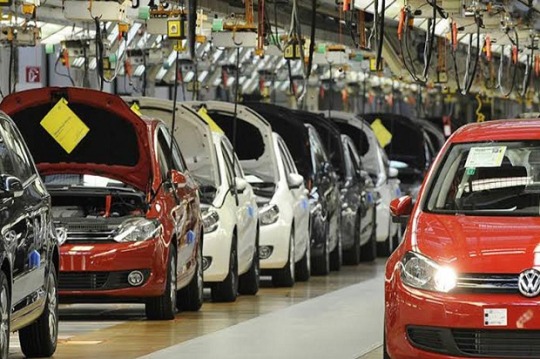
Automobile Sector: A Microscopic View:
Breaking down the Automobile Industry into sectors helps us understand the intricate network of manufacturers, suppliers, and service providers. The sector encompasses passenger vehicles, commercial vehicles, two-wheelers, and alternative fuel vehicles, each contributing to the industry's vibrancy.
Automobile Industry Analysis:
Analyzing the current state of the Automobile Industry involves scrutinizing market trends, consumer preferences, and technological breakthroughs. With a keen eye on global and regional factors, industry analysts decipher patterns that influence market dynamics.
Automobile Market Size:
The sheer scale of the Automobile Market is staggering, with billions of vehicles traversing the world's roads. Estimating the market size involves considering factors such as production volume, sales figures, and revenue generated by manufacturers and service providers.
Automobile Market Share:
Competing in the fast lane, automobile manufacturers vie for market share, striving to outpace rivals in terms of sales and consumer loyalty. Understanding market share provides a glimpse into the competitive landscape, highlighting key players and their respective strengths.
Automobile Market Forecast:
Predicting the future trajectory of the Automobile Market requires a blend of industry knowledge, economic foresight, and an understanding of emerging technologies. Forecasting helps stakeholders prepare for upcoming trends and challenges, fostering adaptability and resilience.
Automobile Market Report:
Comprehensive market reports serve as guidebooks for industry participants, offering detailed analyses of market conditions, growth prospects, and potential challenges. These reports are invaluable resources for decision-makers shaping the industry's future.
Automobile Market Revenue:
The lifeblood of any industry is revenue, and the Automobile Market is no exception. Monitoring revenue streams helps gauge the industry's economic impact, providing insights into its financial health and sustainability.
Automobile Market Trends:
The Automobile Industry is a crucible of innovation, with trends shaping the future of transportation. From electric vehicles to connected cars and autonomous driving, staying abreast of trends is crucial for businesses and consumers alike.
Automobile Market in India:
India, with its burgeoning population and rising economic prowess, plays a pivotal role in the global Automobile Market. Examining the market share in India, identifying the largest automobile companies, and understanding the growth trajectory provides a snapshot of the industry's pulse in the subcontinent.
Conclusion:
The Automobile Market is a complex ecosystem where innovation, consumer preferences, and economic factors intersect. As we navigate through the current landscape and anticipate future developments, the industry remains at the forefront of societal progress, steering us toward a future where mobility is not just a necessity but a testament to human ingenuity.
#Automobile Industry#Automobile Sector#Automobile Industry Analysis#Automobile Market#Automobile Market Share#Automobile Market Size#Automobile Market Forecast#Automobile Market Report
0 notes
Note
So, when it comes to investing in stocks there are a few pointers to keep in mind in order to build a decent portfolio.
1-One should make sure to diversify their investment into different industries, for example having a few stock in each sector like banking, energy, FMCG, automobile etc so that you can hedge your risks in this way
2- While making a fundamental analysis of the entire business you should understand the value it is creating and how the business works before going into its numbers.
3- While coming back to numbers one of the factors that I personally check is the percentage of promoter holding (promoter is the person who started the company) and FII( Foreign Institutional Investors). If the promoter holding i.e. their ownership has decreased over the years then it is not a good sign because it might translate into them losing faith in the business, which means chaotic upper management and hence not a very stable business. On the other hand increasing FII ownership over the year shows that big foreign investors have shown interest in the company and they show interest after doing a lot of inside digging which a retail investor i.e the common people can never do. So if they're investing then it's a good sign you should invest too.
4- Next thing you would like to have a stable debt/equity ratio.
5- And you can create SIP i.e Systematic Investment plan which will invest a certain amount into your selected stocks every month/quarter/year whatever you want. Kinda automates and eases the burden of actively investing.
6-Mutual funds are a great option as well because then whatever amount you plan to invest gets invested proportionally by the fund managers into the top 100/50 companies whatever the fund's breakup looks like.
7- One last thing try to divide your investments into shares and bonds, becasue if the stock market is up bonds is down and vice versa. this can protect you from suffering huge losses in future if a crash ever happens.
That was lot but i love sarah's writing too much to miss a blurb opportunity.
For @harryforvogue viewing pleasure
9 notes
·
View notes
Text
#Global Carbon Fiber for Automobile Market Size#Share#Trends#Growth#Industry Analysis#Key Players#Revenue#Future Development & Forecast
0 notes
Text
"Absent subsidized highways and car-centered zoning, the automobile would have remained a plaything for the rich; a cheap, stripped-down version might have served as well as a useful tool for niche markets (e.g. farmers) not served by the compact mixed-use communities that predated car culture.
In Illich’s view of things, it is the tools or technologies which precede the power structure, with the latter inevitably growing out of the former.
The truth is directly the opposite. Technology does not spontaneously proliferate like tribbles, absent the imposition of external bounds, until it spawns authoritarian bureaucracies. Rather, the technologies are imposed because they suit the needs of power structures. A technology, industry, or institution is able to grow beyond the second watershed and into the realm of negative returns, only because institutional power structures are able to internalize the benefits for themselves while externalizing the negative effects on a public to whom they are unaccountable.
“…O]nly within limits,” Illich says, “can machines take the place of slaves; beyond these limits they lead to a new kind of serfdom.”
Only within limits can education fit people into a man-made environment: beyond these limits lies the universal schoolhouse, hospital ward, or prison. Only within limits ought politics to be concerned with the distribution of maximum industrial outputs, rather than with equal inputs of either energy or information.[54]
This is true. But the necessary limits are not those imposed from without against technologies whose inherent nature — “excess efficiency” — causes them to otherwise grow without limit. The limits are those set by the people who experience both the benefits and negative consequences of the tools they adopt, when governance authority is vested directly in those who are affected by the policies of institutions and do their actual work rather than in an unaccountable hierarchy that serves its own interests or those of absentee rentiers."
-Kevin Carson, ”The Thought of Ivan Illich: A Libertarian Analysis“
5 notes
·
View notes
Text
Top 4 players in US Black Carbon market
Buy Now
STORY OUTLINE
Cabot Corporation: A leading contributor of US Black Carbon market since 1882. Their products are known to provide UV protection and conductivity.
Birla Carbon: An Indian flagship business with more than 160 years of experience in the Black Carbon business.
Continental Carbon Company: Providing Black Carbon products in lines of Industrial Rubber Carbon Black, Tire Rubber Carbon Black, and Specialty Carbon Black since 1936.
Orion Engineered Carbons: Providing Black carbon products majorly in two areas, i.e., Rubber Black Carbon and Specialty Black Carbon for more than 160 years.
According to Ken Research, the United States Black Carbon market is anticipated to become a ~USD 3 Bn. industry by 2028 by growing at a CAGR of ~2.5%.
The US Carbon Black market is rapidly growing and is anticipated to attain a significant level of growth in the upcoming years.
There are many reasons behind the growth of US Carbon Black market. Some of these reasons include increasing automotive sales, industrial growth and increase in urbanization rates, along with rise in the demand for rubber goods.
Various companies and players are contributing to their best efforts in the growth of the US Black Carbon market.
This article aims to put light on the contributions done by the major players towards the growth of the US Black Carbon market.
1.Cabot Corporation
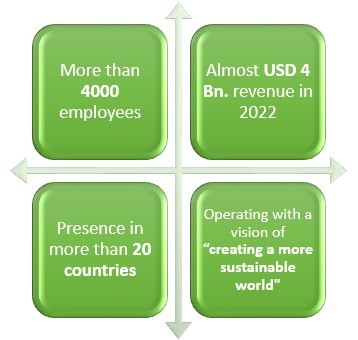
Click here know more about this report
Founded in 1882, headquartered in Boston, Massachusetts, having more than 4000 employees worldwide, and presence in more than 20 countries along with a total revenue of USD 4 Bn. in 2022, this chemical company is a leading contributor of US Black Carbon market.
During 1993, their team was successful in developing a method or process of modifying carbon’s surface, which in turn allowed people to be able to change or modify the carbon surface with other chemicals.
This discovery also led to the development of various other technologies such as printer ink and inject colorants.
The products made by this organization has various applications in various fields such as consumer rubber products, adhesives & sealants, construction, digitalization, inject technology, oil, gas & mining, digitalization, fiber, plastics, tires, etc.
When it comes to Black Caron, this chemical company happens to be the largest producer of it. Some of the popular Black Carbon products offered by this organization include VULCAN, BLACK PEARLS, REGAL, MOGUL, ELFTEX, STERLING, MONARCH, etc.
One of the most amazing feature of their specialty carbons is that they are known to provide ultraviolet protection, and conductivity. Furthermore, these carbons are generally used in the areas of coatings, plastics, printing and packaging.
2.Birla Carbon

Click Here to Download a Sample Report
Birla Carbon is one of the flagship business of the parent company Aditya Birla Group. This flagship business is the largest producer of carbon black and is a well-established business not only in the US Carbon Black but in the whole world when it comes to black carbon.
One of the interesting facts about this organization is that it has more than 160 years of experience when it comes to the Carbon industry. Moreover, this organization has 16 manufacturing sites, 2 corporate offices, 2 technology centers, and 8 offices situated in the whole world.
Their manufactured Black Carbon is primarily used in areas of Tires, Specialty Blacks, plastics, electronic products, and mechanical rubber goods.
Last year, they also have opened their remote black carbon showroom which is primarily done to get a knowledge of benefits along with applications of black carbon products.
Their black carbon primarily come in two types, i.e., Industrial and Rubber. Former’s products include COPEBLACK, RAVEN, and CONDUCTEX. While the latter’s products include STATEX and FURNEX.
Recently, they also announced that they aspire to achieve zero carbon emissions by the year 2050.
To achieve this aspiration, they are also following the Green Finance framework. Birla Carbon is also keen to achieve sustainability excellence. In fact, last year the celebrations for their decade of sustainable excellence were also done.
3.Continental Carbon Company
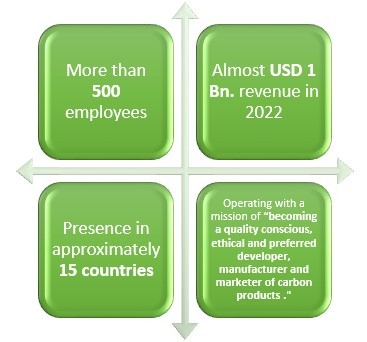
Headquartered in Houston, Texas; with more than 500 employees and presence in almost 15 countries, the Continental Carbon Company is a leading American company in the US Black Carbon market. This company has been in this market since 1936.
They have various lines of work within their Black Carbon range. Industrial Rubber Carbon Black, Tire Rubber Carbon Black, and Specialty Carbon Black are primarily the three of their product lines.
Their Industrial Rubber Carbon Black is suitable for many things such as flex strength for belts & hoses, weather stripping, abrasion resistance for footwear, and commercial roofing. The products in this line include N550, N650, N660, N683, N762 and N774.
Their Tire Rubber Carbon Black is primarily provides fuel mileage, abrasion resistance, treadwear, hysteresis. The products in this category include N234, N326, N330, N351, LH30, N550, N650 and N660.
Their Specialty Carbon Black typically provides conductivity, UV protection, and pigmentation. The products in this category primarily include SBX152, SBX252, SBX352, SBX452, SBX552, SBX652, SBX256, SBX656, SBX 251, and SBX351.
4.Orion Engineered Carbons
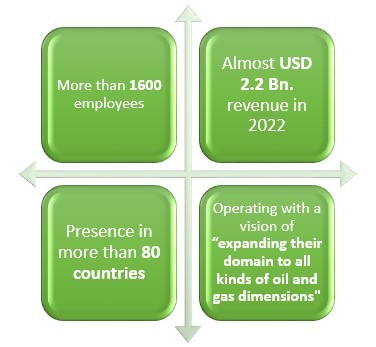
Click here Request for custom report
Operating in the Black Carbon market for more than 160 years, this German company is a well-established company in the US Black Carbon market. It has its headquarters situated in Luxembourg, Europe. On the other hand, its executive offices are situated in Houston, Texas, US.
This company was formed in the year 2011 when the Evonik Industries decided to sell off their Black Carbon business. Now this chemical company is known to be the pigment black’s largest producer, and rubber blacks’ third largest producer in the world.
Their product lines can be broadly divided into two categories: Rubber Black Carbon and Specialty Black Carbon. The former is primarily used in the tire industry while the latter is typically used paints, coatings, and lithium-ion batteries.
Footwear, Wiper Blades, Gaskets, Seals, Extruded Profiles, Tubes, Rubber flooring, Anti-vibration engine mounts, Seals, Belts, etc. are the primary applications of their Black Carbon products.
Their Black Carbon products primarily include Thermal Blacks, Furnace Blacks, Specialty Gas Blacks, Lamp Blacks, Acetylene Blacks, etc.
#US Carbon Black market#US Carbon Black market forecast#US Carbon Black market share#US Carbon Black market size#US Carbon Black market growth#US Carbon Black market analysis#US Carbon Black Industry#United States Carbon Black market#US Carbon Black market trends#US Carbon Black industry challenges#Leading Service providers US Carbon Black Market#Leading players in US furnace black market#Competitors in US thermal black market#Emerging players US Carbon Black industry#Major players in US Carbon black sector#Top 5 Carbon black manufacturers US#Automobile companies in Carbon Black market US#Top players US lamp black market#Investment US Carbon Black Market#Funds raised startups furnace black market#Thermal Black in US Carbon Black market#Furnace Black in US Carbon Black market#Tires and Rubber products in Carbon Black market US#Investors in US Carbon Black market#Venture Capitalists in US Carbon Black market#US Soot Carbon Black market#US Carbon Black particles market#US residual Carbon Black market#US amorphous carbon black market#US Carbon black sector
0 notes